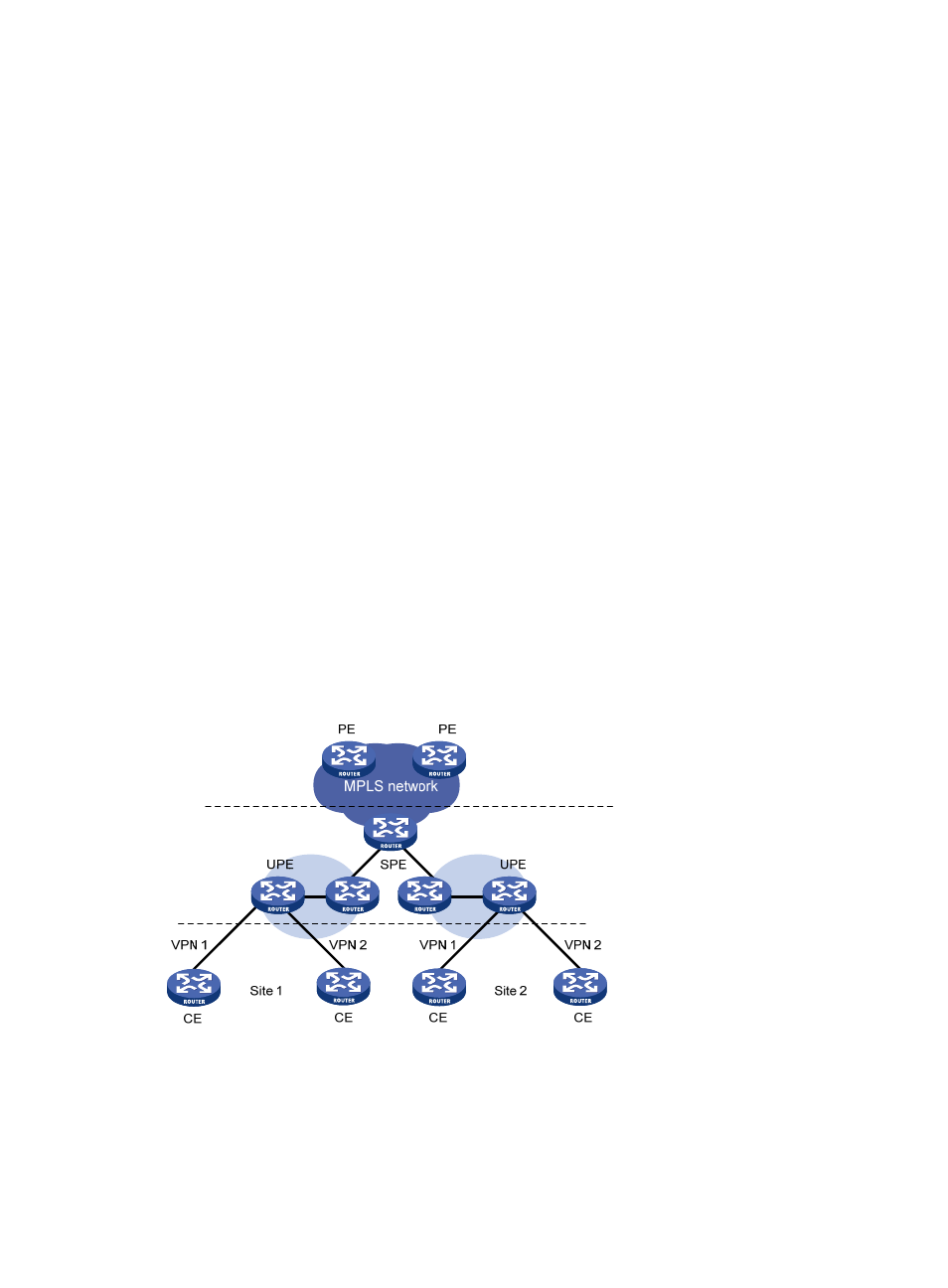Hovpn, Implementation of hovpn – H3C Technologies H3C S12500-X Series Switches User Manual
Page 124

113
Nested VPN is flexible and easy to implement. It reduces networking costs, provides diversified VPN
networking methods for customers, and allows for multi-level hierarchical access control over internal
VPNs.
HoVPN
In MPLS L3VPN solutions, PEs are the key devices, which provide the following functions:
•
User access, requiring that the PEs must have a large number of interfaces.
•
VPN route management and advertisement, and user packet processing, requiring that a PE must
have a large-capacity memory and high forwarding capability.
Most network schemes use a typical hierarchical architecture. For example, the MAN architecture
typically contains three layers: core, distribution, and access. From the core layer to the access layer, the
performance requirements on the devices decrease while the network expands.
MPLS L3VPN, on the contrary, is a plane model where performance requirements are the same for all PEs.
If a certain PE does not have enough performance or scalability, the performance or scalability of the
whole network is influenced. Therefore, the plane model is not applicable to the large-scale VPN
deployment.
To solve the scalability problem of the plane model, MPLS L3VPN must transition to the hierarchical
model. Hierarchy of VPN (HoVPN), also called Hierarchy of PE (HoPE), was proposed to meet the
requirement. With HoVPN, the PE functions can be distributed among multiple PEs, which take different
roles for the same functions and form a hierarchical architecture.
As in the typical hierarchical network model, HoVPN has different requirements on the devices at
different layers of the hierarchy.
Implementation of HoVPN
Figure 42 Basic architecture of HoVPN
As shown in
, devices directly connected to CEs are called underlayer PEs (UPEs) or user-end
PEs, whereas devices that are connected to UPEs and are in the internal network are called superstratum
PEs (SPEs) or service provider-end PEs.
Multiple UPEs and SPEs comprise a hierarchical PE.
UPEs and SPEs play the following different roles: